Updated on April 24th, 2013: I have enjoyed my 6D so much that I have now sold my 5D MKII and purchased a second 6D body. I think that pretty much says it all.
Not on my Radar
As many of you know, I am a full time pastor and a part time photographer. I do photography for both pleasure and for profit, so I call myself a “semi-pro” photographer. At this stage I am a somewhat accomplished photographer. I’ve been published more times than I can count on one hand and get regularly asked to do paying work. Beyond that, I know from the response of those that I consider very accomplished photographers that my work is good. I have a fairly extensive kit of expensive equipment, and have the means to purchase a new camera body of my choice (although I don’t feel that I have 1DX money). So why in the world did I choose Canon’s new “budget” (if you call a camera that costs more than $2000 budget!) full frame DSLR over the “serious” choice of the Canon EOS 5D MK3? I have been asked this very question multiple times, so that I felt that it was appropriate to respond here in a more extensive fashion.
First, a little history. I don’t earn my living from photography, but I do have a policy that all new camera gear that I purchase must be funded solely by photography proceeds. Going back almost two years ago I had decided that I wanted to transition from my crop sensor DSLRs to a full frame body. I was doing more and more professional work and felt that the improved image quality and low light performance would be worth the added bulk and cost. I stopped buying lenses (always hard for me!) and started putting money aside for a full frame body. As I was getting close to having the money together, I realized that the MK3 was coming soon and that I might as well wait for it. Then Canon’s projected price started hitting the news streams, and I realized that the approximate $4000 price tag here in Canada after taxes was more than I was interested in paying. I bought a MK2 instead, deciding that I would use it in the interim until the MK3 price dropped somewhat. I still feel that this was a good decision, for although I was initially disappointed in the MK2 for its (aged) handling and AF, the great image quality won me over. My MK2 has served me very well over the past year and a half, and has produced many of the best images that I have ever taken. I had to go through the process of re-orienting my lens kit, eventually selling all the crop only lenses (EF-S 15-85mm, EF-S 10-22mm, Tamron SP 17-50mm f/2.8, Sigma 50-150mm f/2.8 [wouldn’t that be a great full frame focal length!]) and replacing them with full frame equivalents during this time frame.
My intent was always to move the to the MK3, and after making the changes to my kit, I realized that I wanted to replace my surviving crop sensor body (Canon EOS 60D) with a second full frame body. I would keep the MK2 and add the MK3. I just wasn’t using my 60D anymore, although I truly loved the camera. Fast forward to about a month ago. I had the money set aside to purchase a 5D3 – I was just waiting on a sale to drop the price a couple hundred bucks so that I could feel good about getting a “deal”. The 6D had been announced, speculated on, and then released a few months ago. I wasn’t interested. I’m a serious photographer (or so I think), why would I want “entry level”, even if it is a very expensive entry level camera? The 6D was not on my radar. Then, in January, I was trolling the photography sites every day, primarily looking for that deal on the 5D3, when I started seeing reviews of the 6D coming out. I like reading product reviews, so I started clicking links.
That’s when I got confused.
You see, the early word on the forums and even from the blogs/review sites was that the 6D was nothing but a stripped down bargain full frame camera. More 60D than 5d3. Some even referred to it as the “Rebel” of Canon full frame cameras. But that wasn’t the conclusion being drawn by those that were actually reviewing the camera and taking time with it. Yes, there were some head-scratchers of clear “dumbing down” moves by Canon like a lower maximum flash syncing speed (1/180th of a second, not 1/160th as is commonly reported) and a maximum shutter speed of 1/4000th. These are things exceeded by my 60D, and are clearly moves designed to provide separation between the 6D and 5D3. The reason for that will become clear in a moment. The other thing that received a lot of publicity was the dumbed down AF system, with only 11 AF points and only one hyper sensitive one, the center point. On paper that immediately made people think that the old tepid 5D2 AF system had been rehashed and reused.
But these things didn’t tell the whole story. First, one of the reports that came out revealed that the center point of the AF system was not just better than the others, it was better than ANY other. It’s sensitivity is a full half stop better (-3 EV) than any other Canon camera, meaning that the 6D focuses better (faster and more accurately) in low light conditions than any other Canon camera (provided you are using the center point). It focuses in situations (moonlight equivalent) that no other Canon body will. This is an area where many users of the 5DIII have complained, and it has been compounded by the woes the camera has when using AF assist from a flash. This is a situation that as an event and portrait photographer I routinely run into, so that was one check in favor for the 6D.
Second was two new features on the 6D that no other Canon DSLR body has: built in GPS and Wi-Fi. I have read several people scoffing at these features as being gimmicks. They weren’t to me. First, I routinely geo-tag all my images in Lightroom 4. I share some of my work on Flickr and 500px, and I like having that information there. Having that done in the camera saves me time in my workflow. If I am shooting in one location, that may be a small thing, as putting a batch of images onto the map is reasonably quick. But when I am moving around, it becomes a bigger time saver. I love opening the map tab in the Lightroom and seeing my images already marked there because of the 6D’s built in GPS. (P.S. I turn it off until I am going out on an extensive shoot and then turn it on for that to save battery life. By the way, speaking of battery life – the 6D uses the same battery as both the 5D3 and the 5D2 (amongst other cameras), for which I am thankful. The good news is that the 6D manages about 140 shots more per charge than the 5D3 (or 5D2) – it is rated for about 1100 shots. Some people have found the battery life far better than that rating. Another small plus. The second big feature is the Wi-Fi feature. I have the challenge that many photographers have – I never get in pictures! I’m always behind the camera; there are times when I need to be in front of the camera, too. The ability to remotely control the camera (particularly when using large apertures) gives you incredible creative control when you are in front of the camera. Doing this concept shot of myself with a 135mm lens at f/2 would have been incredibly difficult without the remote functionality of EOS Remote.

The second aspect of the Wi-Fi ability is possibility of shooting “tethered” wirelessly where clients can immediately see images in a much more compelling way than a viewfinder. In the right situation this is a big deal. Could these things be done on other cameras (like the 5D3)? Yes, but only with very expensive accessories. The EOS Remote utility still has room for improvement (native resolution for tablets is coming, for one), but this is a big feature for both casual and professional use.
That leads me to the single biggest factor that swung me from the 5D3 to the 6D: image quality. What? Image quality? The reviewers found three very strange things when they reviewed the 6D.
- The High ISO performance was actually better than the 5DIII. This was a shocker! Files are actually less noisy at High ISO from the 6D, exceeding the 5D3 and rivaling (if not surpassing) the 1Dx
- Slightly more dynamic range in the 6D. This was something people groaned about when compared to the Nikon D800 when it and the 5D3 came out. The dynamic range is slightly higher in the 6D and the graduation from highlights and shadows is smoother as a result.
- Pattern noise in shadows is reduced. The ability to recover shadow detail without banding is superior in the 6D.
This shot is from one RAW file, processed only in LR4:
This floored me. I would have expected image quality at best to be the same as the 5D3, but it appears that there has been some changes in the processor and sensor that have resulted in improved image quality, the one thing that matters most to me. It was about then that I started looking at the negatives of the 6D with new eyes. It makes me question Canon’s thought processes, however. I was ready to purchase a more expensive, superior model, but it isn’t so clear cut as one camera being better or worse in every way. But the price difference was big, really big!
Is price a factor? Absolutely. It isn’t the only factor, or even the biggest factor, but, like I discussed in my review of the Tamron 24-70 VC lens, it is more about the equation of value and performance. The difference in cost here in Canada was approximately $1400 after tax. $1400 is a pretty nice lens (the new Sigma Art series 35mm f/1.4 and Tamron 70-200mm VC are on my current wish list). I pulled the trigger on the 6D, and haven’t regretted it. Here’s a few random observations I wrote after shooting a business event the evening after getting my new 6D:
“I cannot speak from the perspective of the videographer end (I do shoot DSLR video, but it is not my focus), but after having shot my first business event (primarily stills) with my new 6D along with my 5D2 last night, I would gladly exchange my 5DMK2 for a second 6D today.
1) Coming out of standby. When I shoot events, I keep the camera(s) on and let them sleep. The 6D is (in my unscientific testing) somewhere between 2-3 times faster in coming out of sleep mode. The 5D2was noticeably slower. This is a big deal when a crucial shot in unfolding and you are waiting for your camera to come alive.
2) Snappier autofocus and less shutter lag. I actually had the snappier lens on the 5DII (135L) vs. the Tamron 24-70 VC on the 6D), but while the 135L focuses faster, I still felt my overall focus to capture time was better with the 6D. I had never really known the shutter lag of the 5D2 until I shot my 6D. It seems to snap while you are still thinking about snapping.
3) ISO performance. I was shooting in 2500-3200 range most of the evening. The noise level and overall IQ is noticeably superior in the 6D, not to mention the color is superior.
For the kind of work I do (events, weddings, portraiture, then fine art/landscapes), the 6D promises to be a great performer. I am really excited about it.”
I shot a birthday party and the power went out. I had to boost to ISO 5000+ and was pleasantly surprised at how great the color was despite the very challenging lighting conditions:
But What About that AF?
The AF system is the one thing that I wish was more robust on the 6D. If you are a sports or bird photographer, I think that the 5D3 is the better choice for you. But what about the rest of us? The accusation that the AF system in the 6D is simply a rewarmed AF system from the 5D2 is far from accurate. The system in the 6D is noticeably snappier than the AF on the 5D2, but beyond that, more importantly, both chart tests and my own experience at this point have revealed that AF is MUCH more accurate in the 6D than the 5D2. Check out this link for some pretty compelling chart tests. You will quickly see that the difference between the accuracy in the 5D2 and the 6D is huge. It’s accuracy surpassed the Nikon D800 (the 5D3 was not a part of this test). I have primarily been using the 5D2 this past year, and I certainly found the 6D’s AF to be far preferable. The faster AF combined with decreased shutter lag makes for a much faster “acquire and fire” time.
That being said, while I don’t mind the number of AF points (I have primarily used the Canon 60D and 5DII the past couple of years), I do wish that the spacing in the frame was farther apart. The 5D3 offers many more customizable points, zones, and overall faster AF. These points also cover far more of the frame. It is for that reason above all that I will likely upgrade my 5D2 to a 5D3 in the next year. There are rare occasions when I could use the more robust AF system, although 90% of the time my shooting style allows me to be more deliberate. My “keeper rate” is definitely higher when compared to the 5D2, however, and, like the 5D3, the 6D allows me to microadjust zoom lenses on both the wide and tele ends. The 5D2 allowed only one adjustment. My accuracy is definitely up overall!
Other Shortcomings – Big or Not?
First, let me clear that I am writing only from my style of photography. Some of these things are not big to me; they may be to you. I encourage you to draw your own conclusions.
The 6D is currently the lightest full frame DSLR available. Some have immediately concluded that this makes it’s build quality poor. But I can certainly attest to the fact that heavier doesn’t always equal better. If you are shooting a wedding or travelling, for example, lighter isn’t a bad thing. The build quality is still very robust on the 6D, and the design of the grip is exceptional. It just seems to balance perfectly. I can put one finger in the grip and let the camera dangle and it just seems to balance there. It is almost uncanny. The 6D feels good in my hands. The camera is weathersealed, although the robustness of this (in some way) is slightly less than the 5DIII. I do go out in the elements with my gear, but I have never had any issues with regards to weathersealing with my 60D, and I expect the weathersealing is probably slightly better in the 6D. The light weight is not a negative for me, and the build quality feels like “enough”.
Shortened shutter life. The shutter life rating on the 6D’s shutter is 100K actuations. The 5D3 is rated for 150K. If you are the kind of user who is likely to hit the higher shutter count during your use of the camera, this is definitely a consideration. That being said, replacing a shutter is around $300; it’s not the price of a new camera. Although I would consider myself to be somewhat of a volume shooter, my 5DII (which I have used almost exclusively in the past 14-15 months) registers a little over 17K actuations. For most users this is not going to be a major consideration. For volume shooters the more robust shutter of the 5D3 might be a better choice, although you could replace several shutters for the difference in price.
Frames Per Second. This one is potentially a big deal if you are a sports or wildlife photographer. The 6D is rated at 4.5 FPS; the 5D3 is 6. The RAW buffer in both cameras is pretty similar, with a slight advantage to the 5D3. I primarily use burst when shooting handheld bracketed photos. Coming from the 5D2, the 6D seems fast, particularly when considering the reduced shutter lag, but it will probably seem slow coming from a 5D3. This is not a big deal for my style of photography; it may be for yours.
Maximum Flash Sync Speed. The maximum flash sync speed of 1/180th of a second is slightly less than the 5D3’s 1/200th of a second. The truth of the matter is that both of these figures should be higher. That being said, I primarily use the Yongnuo 622C wireless E-TTL triggers and find that with either my 580EXII flash or 430EXII flash they will automatically go into high speed sync mode when exceeding that figure. High speed mode comes with a reduction in overall power, but as I am always reducing power in my flashes to produce more natural lighting anyway, this hasn’t changed my workflow one iota compared to my 5D2 (which has the same max sync speed as the 5D3). This is a non-issue for me (but may be one for you).
Maximum Shutter Speed. This one is just silly, but, this is one of those areas where Canon deliberately crippled the camera to provide distance from the 5D3. The max shutter speed on the 5D3 (and only other reasonable camera) is 1/8000th of a second; the 6D is 1/4000th, which means that 1/5000, 1/6400, and 1/8000 are not available. Many photographers will be unaffected by this. I myself see one area where I could be affected by this: bracketed photos. When shooting bracketed photos where at least one frame is deliberately underexposed by several stops it is possible to bump up against this “ceiling”. This can be counteracted in two ways: 1) choose a narrower aperture or 2) use an ND filter, which I have in every filter size of lens that I use. It is also possible to further underexpose a bracketed shot in post when shooting RAW. I doubt that this is a serious issue for many, if any photographer.
SD Card vs. CF Card. To me this is more of a perception issue than any. I have used both, and CF cards have been traditionally considering the “PRO” card. Transfer speeds were faster and the cards tended to be more physically robust. The truth of the matter is that outside of the DSLR world CF cards are a dying breed. Almost all of the development energy has gone into the various sizes of SD cards in recent years, and these days the transfer speed of higher end SD cards rivals CF cards. Most of the current generation of high end DSLRs acknowledge this, but typically include both a CF and SD card slot. There are a few big plusses for an SD card over CF. The first is compatibility. Many laptops and computers feature an SD card reader, but no CF support. I have a camera adapter for my iPad that features an SD slot, but no CF. Costs are typically lower on SD cards because of their wider use. I have read some saying that the smaller size of the SD card means that they are going to be breaking them or losing them, but that just strikes me as inane. They aren’t microscopic! SD cards also have no small exposed pins that can be bent or damaged. Do I wish there were dual slots on the 6D? Sure, why not?…but I don’t actually need them. I have never yet filled my 32GB card(s) in any of my cameras on any trip or shoot, and I have further been blessed to have never had a memory card failure of any kind.
Ergonomics. I haven’t actually used the 5D3, so I can’t comment on it’s ergonomics by comparison. I suspect they are overall better than the 6D. I can say, however, that I definitely prefer the ergonomics of the 6D as compared to the 5D MK2. I love having an actual “Q” button, that live view and video are better implemented, that focus in live view is through the shutter, and the location of the on/off switch. I miss the “joystick” slightly, but have quickly adapted.
Video. If you are a videographer, the 5D3 is your choice. The 6D lacks the headphone jack and reportedly struggles with moire more than the 5D3. For my occasional use, the 6D is superior to my 5DII because it offers a fuller range of control over video and is better implemented ergonomically. It’s superior ISO performance will also be a boon. I’ve only used it a bit so far, but I certainly like what I see just fine for my purposes.
The Bottom Line
For me, the combination of slightly superior image quality, GPS + Wi-fi, and much lower price trumped the superior (in most ways) AF and improved build quality of the 5D MK3. I asked this question in a Canon forum: “But my point is that Canon has really muddied the waters for potential customers like myself. If the 5D3 was clearly superior in every way, I would be purchasing one right now. It’s not, so I didn’t. Was that in Canon’s best interest?”
I bought the Canon EOS 6D…and then another one…and I love them. So far, I have no regrets. For a great second opinion from a talented Wedding Photography team based out of Colorado, check out Irving Photography’s take from the perspective of doing wedding/engagement photography.
Purchase a Canon 6D (Body only) at B&H or in a kit with the excellent Canon EF 24-105mm f/4L IS

Click on the image below to open a gallery of images I’ve taken with the 6D in the past three weeks
[sliderly id=1074 type=featuredimg colorbox=true width=500 height =300]


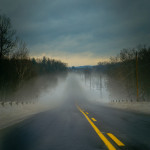


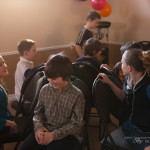
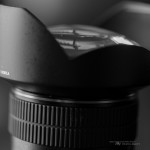

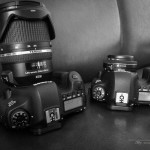
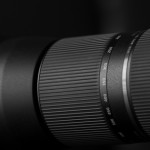
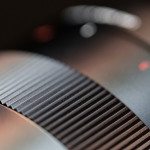
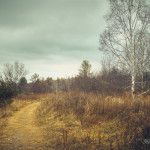


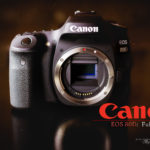

On your comment about 6D vs 5D MKIII today I have ordered a 6D body. It has taken a while before I was “over”, but your story convinced me that the 6D is the right camera for me.
Thank you very much!
I am really glad to hear that. Enjoy this great camera!
Thankful I came across this. Hello 6D, bye-bye MKII.
Really glad to have been of help. Enjoy!
I really enjoyed your article, Dustin.
But there’s one small (some would say) thing that stands in the way from upgrading my 60D to 6D – it’s the flip-out screen. I use it A LOT in low (sometimes very) angle shooting and some weird positions.
How is it possible to give up and to use the “static” screen instead?
That is certainly a genuine issue. I was really, really disappointed when Canon failed to put the flip-out screen in both the 5DIII and the 6D. I too really enjoyed using it on the 60D. I have adjusted, of course, but for shooting low/high angle shots and video I do sorely miss the vari-angle screen. I don’t know why it was not included, but thus far neither Canon nor Nikon have chosen to use a flip-out screen in a full frame body.
They probably left out the flip-out screen for proper weather sealing. You don’t see many built-in flashes as well for the same reason I suspect.
I believe the 6D has the option to use your phone as an external screen through Wi-Fi, which is even more flexible than being restricted to a screen that stays attached to the camera!
David, I don’t know that I buy that line of reasoning. Both the 60D and newer 70D have similar degrees of weathersealing and have flip-out screens + pop-up flashes. The Nikon D800 has a pop-up flash and I have heard no complaints about its degree of weathersealing.
The 6D does have wi-fi functionality, which is useful (and in some cases extremely useful), but the refresh rate is rather poor, it is somewhat laborious to get into that mode, and it doesn’t help at all with video as the two can’t function at the same time. I don’t view that option as a replacement to the articulating screen at all, particularly for video work. Your point is well taken, but I don’t think that I agree.
Dustin
Hi,
Thanks for this article. I’m really confused between the 5DIII and 6D… especially with the option of getting a crop sensor body (which supposedly can have its benefits in terms of lens choices).
Most reviews I’ve looked at so far lean towards the 6D because its benefits/cost factor when compared to the 5DIII… And now, your article almost sealed the deal for me on the 6D.
That is until you didn’t have much to say in terms of video-related benefits.
Background: this would be my first DSLR and I’m primarily interested in shooting video…and luckily I can afford a “premium” camera.
So, please help me if you can: I’m wondering if there is any more info you could add based on your experience with video on your cameras. I’m more concerned about future needs, like lens options and compatibility. For example, if I get a crop sensor like 60D or 7D (because of the flexibility of lens for long shots), would at least some lens be transferable if I choose to upgrade to/add a full frame body?
Yes, 5DIII seems to be the ultimate choice for prosumer videography, but I almost feel guilty getting it as my entry camera. I even feel a bit guilty getting a full frame, period, but I think I will feel more confident if I know a full frame is truly worth the investment after the add-on lens are considered.
I’m sort of rambling now, so I’m sorry if I’m not making much sense. Any insight you can provide will be much appreciated!
– Immanuel
(PS: I read somewhere that both 5DIII and 6D have audio jacks)
Immanuel,
Making that choice is tough. First of all, you need to know that while I do shoot DSLR video, it is far from my primary focus. I am mostly a stills guy. I personally feel that the 6D produces great video, but others have reports issues with moire. It does have an audio jack, and I personally use an external RODE mic with it. The 5DIII is considered the better choice if your primary focus is shooting video.
A secondary choice would be the 70D. It has a revolutionary new AF system that makes true autofocus in video a reality. It might be your best choice if you want to shoot video and don’t need the extreme shallow depth of field and high ISO performance of a full frame body.
Hope this helps,
Dustin
Thanks for your feedback Dustin.
I looked into the 70D, and its autofocus and flip-out screen were very tempting. But I ended up getting the 6D. I decided ISO performance, and overall “premium” qualities of the 6D were more important to me for now.
Yea.. it’s my first but I want something I can grow into, and then figure out what I really NEED in a camera after closer experience… AND for some reason, the 6D seems to call out to me lol.
I think you will thoroughly enjoy the 6D. It produces stunning image quality, and that, above all, is the most important (at least to me).
I ordered a 6d which is not delivered yet but was still so confused and somewhat concerned as it gets so much beating as compared to Markiii. Now after reading your review I feel better and yes money saved from buying this is going to add a nice lens in my collection! Thanks for this wonderful review!
You’re welcome! On paper the 6D doesn’t stack up all that well compared to the MKIII, but I have talked with dozens of people who have purchased the 6D and have found, like me, that in real life application that 6D is an exceptional camera; one that has done very, very well for Canon.
Hi Dustin,
I have read your article with great interest and concur on almost everything you say.
I started with a 40D, followed by a second-hand 5D MkI with additional wi-fi transmitter when I started shooting events. Last December I took the plunge and bought a 6D on two criteria; built-in wi-fi and cost.
Was I disappointed? Absolutely not. The 6D has proved itself to be an excellent events work-horse. I did however, hanker after a 5D MkIII and in June this year, I bought one.
I, like you will only buy gear that pays for itself and boy have these two pieces of kit had to work hard and bring me a return on investment.
Having run both cameras side-by-side and sometimes simultaneously, I can honestly say that sometimes I don’t realise which one I’m using they are that well matched. Even though the 6D is slightly smaller and slightly lighter, sometimes I have to turn them over to see which one I’m holding!
A colleague of mine bought a 5D MkIII and hated it after the MkII, which I thought a little strange. He sold the 5D MkIII within six months. He now thinks he might have had a potentially faulty one as he has used mine and feels it is far superior to his one. He is currently borrowing my 6D to test it out at an event tomorrow, including using wi-fi to get the images back to the print station as he shoots. He is already before properly testing it very impressed and close to buying one. I guess tomorrow’s event will tell.
The 6D got panned pre-launch because of it’s apparently crippled specification. I personally feel that much of the criticism was unfairly levelled at what is turning out to be a superb camera with features that are actually quite useful. I for one have actually used the wi-fi facility to get images into publication direct from an event on numerous occasions. My clients on those occasions were blown away by the ability to beat the competition. I’ve even had news reporters begging me to send images to them virtually as they happened. Try that on a 1Dx or 5D MkIII without the stupidly expensive WFT-E7 transmitter.
In conclusion; wow.
Glenn
Glenn, what an awesome testimonial, and extra great because of your experience with both bodies. Thanks for sharing your own experiences, and I’m glad that you have been well served by what is an excellent camera!
Old article, stumbled accross it when googling for something. But still fun to read how you went through the same process as I did back then. 2013 was a year full of travelling for me: South America, New England, Hawaii, Iceland, Tuscany and many Cities all over Europe (I live in Switzerland). And i was going to make photography the center of these travels. My only camera was a 7D and I was actually really happy with it, but I wanted a FF body (in addition) for my travelling. 5DIII was an obvious choice, but then I started to read all the things you described about the 6D and finally got one of those. My friends mocked or pitied me a bit for that decision, but it was perfect: Small, lightweight, long battery life, great weather sealing, gps, wifi, incredible low light performance and great overall image quality. definitly the best camera (for me) back then, and still loving it more than 3 years later, mainly taking pictures of my two little girls.
Started to think about a 5DIV now, though 🙂
I’m definitely going to be watching the 5D4, too. I have the unique privilege of being able to review it when it comes out, so I’ll get a chance to make an informed decision there. My 6D bodies have served me very, very well, though, and have paid for themselves many times over.
I’ve owned and used the 6D for about three years and love it. Last month I added a second Canon body and decided to go for the 5D3. Image quality is essentially the same, as I knew it would be. The 6D is the better travel body for sure, but the auto focus on the 5D3 is vastly superior for anything moving, and also is a better match for macro shooting or precise f/1.2 focusing off-center with the 50/1.2 L for portraits. The center point, while a stop less sensitive than the 6D, does have a neat trick in the form of spot focus, making the point much smaller than the 6D’s which again helps with precision focus at ultra-wide aperture when aiming for the eyes.
For events I like to use the 5D3 with the 50/1.2 L (I adore this lens for events) and the 6D with the 35/1.4 L II, which is far less finicky with precision focus. Together, the two cameras make a terrific pair.
Th 6D remains the better body for travel and for manual focus (Mine has the S precision screen), though th 5D3 feels a lot more ruggedly built and is reputed to have better weather sealing, making it my body of choice when I know I will shooting in heavy rain.
I am very glad to have both, and can see using them about equally.
Andrew, that’s a pretty balanced take on the two cameras. They both have their merits, strengths, and weaknesses.
Great article….
To say that Canon did indeed muddy the water with the release of the 6D is a shortcoming. I have read every bit of 40 to 50 reviews, watched many different YouTube video reviews and I am still on the fence about the 6D. Why? Because, while I understand it is in every sense of the word, more camera than most need, a little tiny voice in the back of my mind keeps popping up and saying “what about those few times you do shoot sports of birds”. In as much as I’d like to gain increased IQ by going FF, I don’t want to loose the option to shoot action when I want to. And, in the end I don’t have 5D3 money either. Ugh!
Darrell, there’s a reason why this has been my most read article over the past four years. A lot of people are in the same place you are.